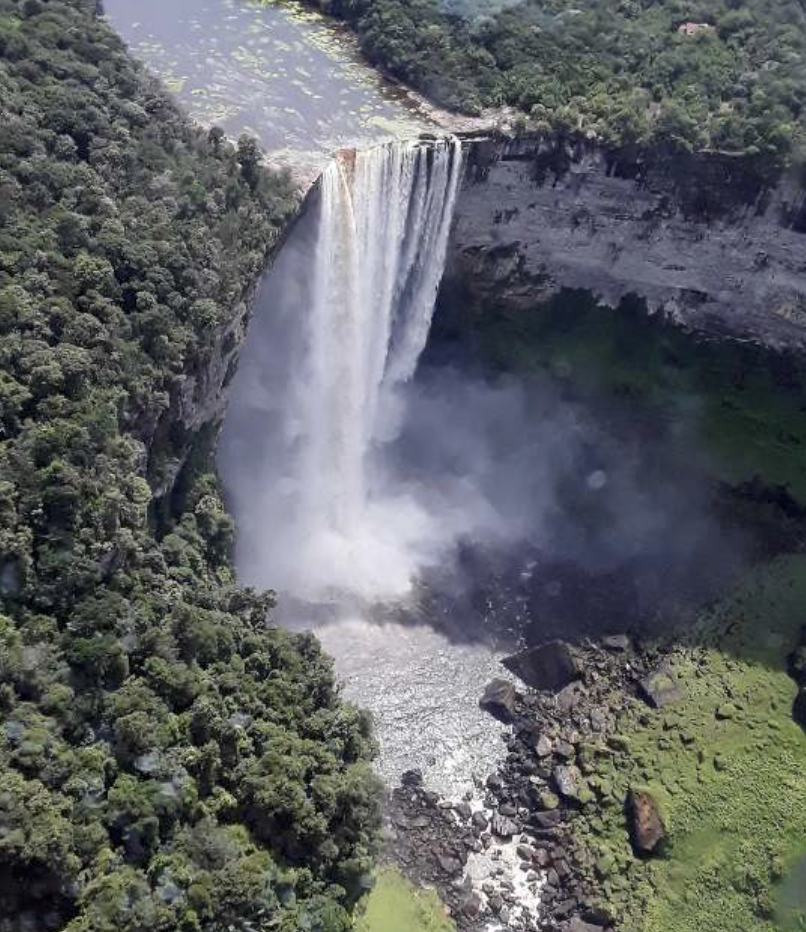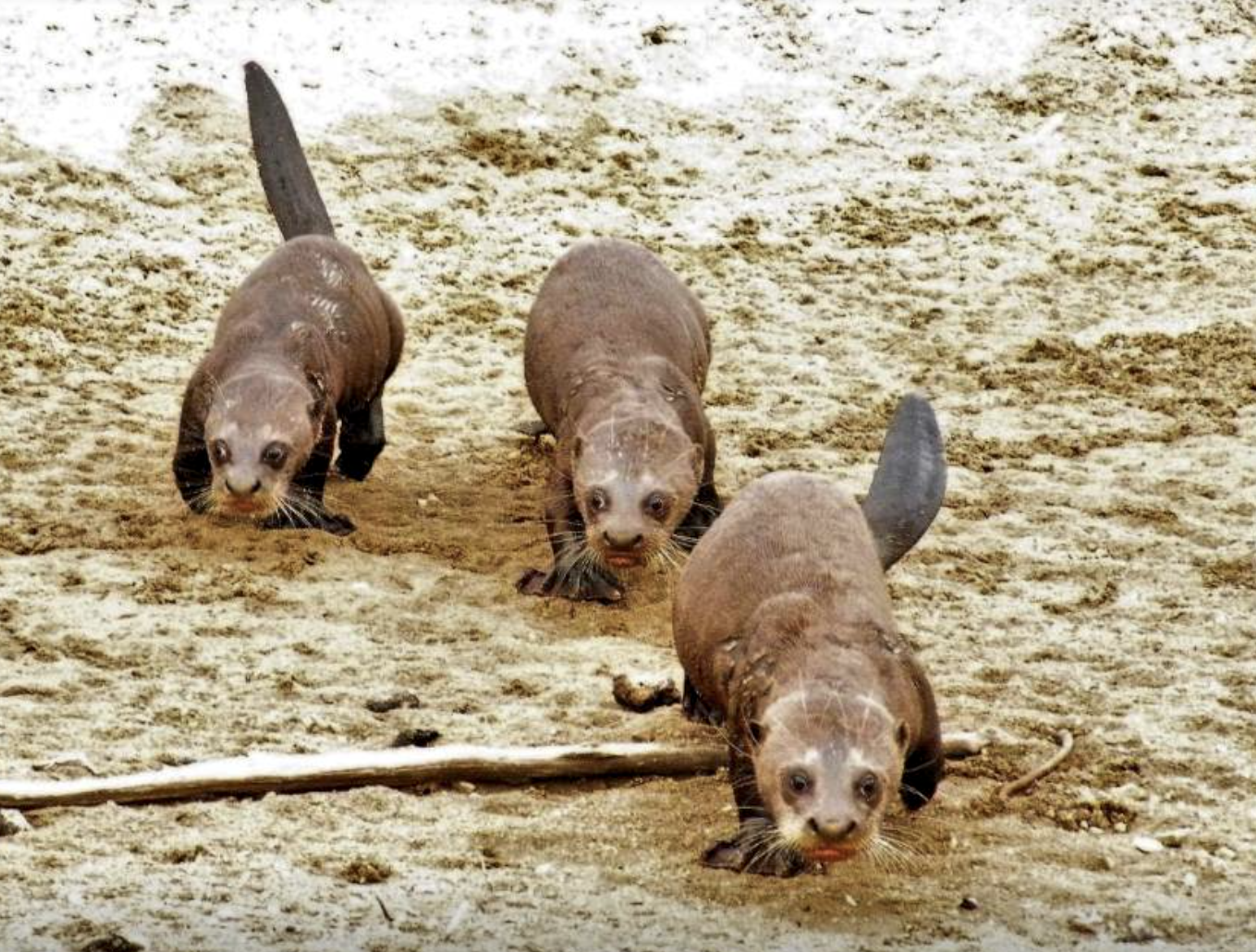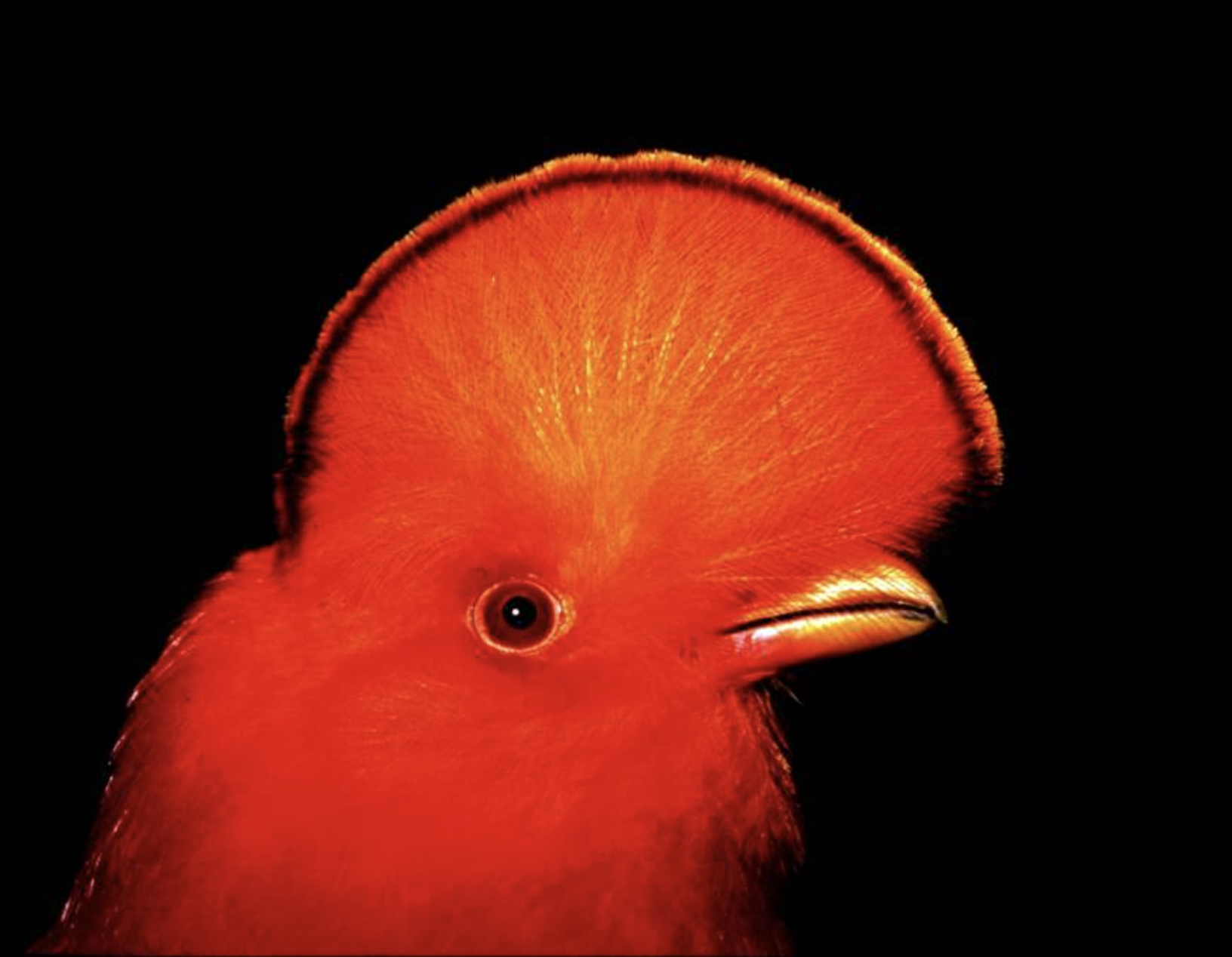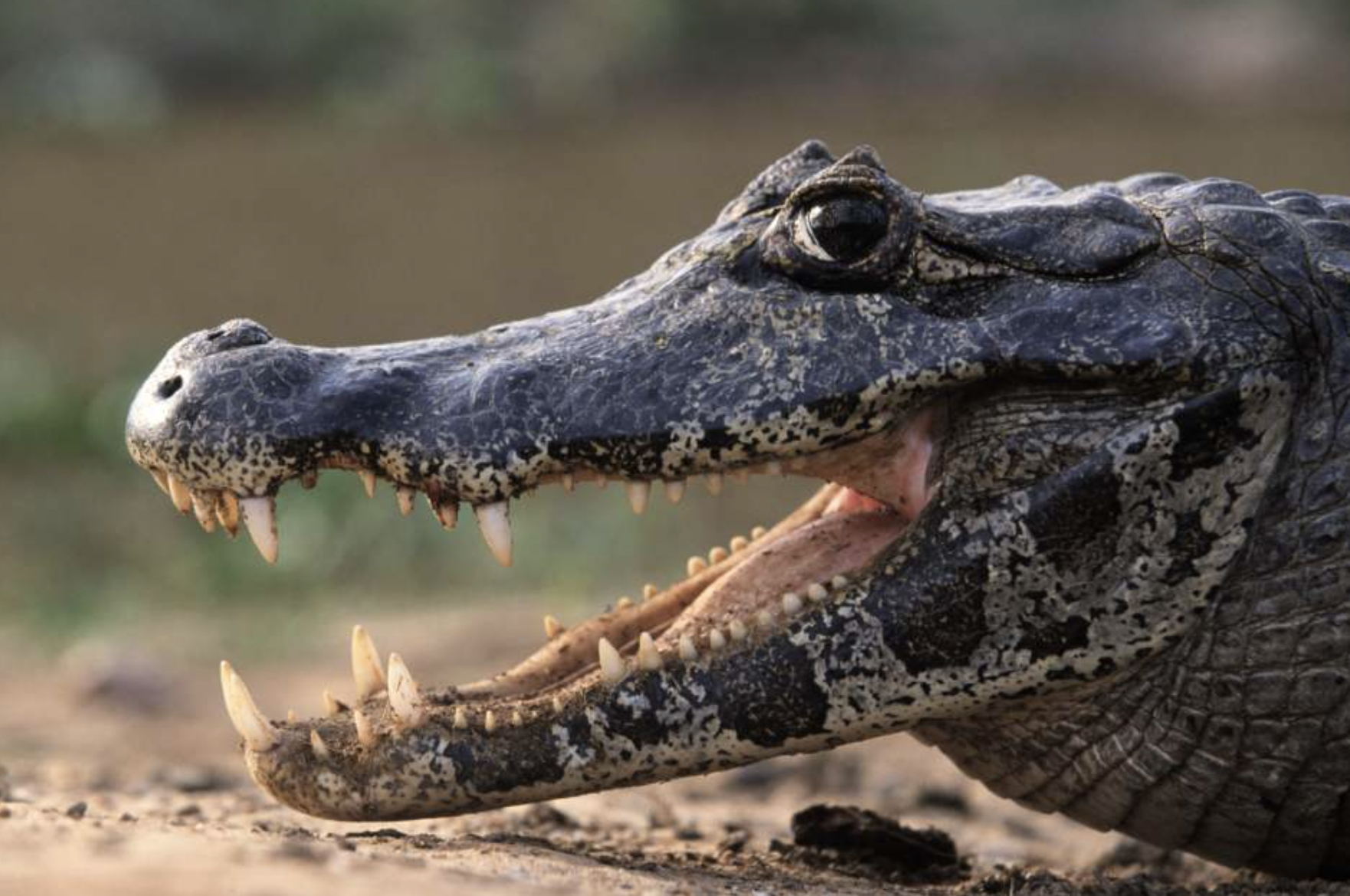Tropical Gem for Nature Lovers by Craig Doser
Alaskans love nature and love an escape from the darkness in the winter. With that in mind, what would you say about a nearly unknown tropical country with pristine wilderness, unequaled wildlife, great food, excellent cultural opportunities, and English speaking locals who enthusiastically welcome visitors? The place I am describing is Guyana.
Guyana is South America’s only English speaking country. It is about the size of Idaho and has a population similar to Alaska at 750,000. Of that population, about 90% live along the coastline with the remainder of the country being extremely rural. Well over 80% of its virgin tropical rainforests remain intact, and these are accompanied by vast grassland savannas adjacent to them. There are upwards of 900 species of birds, more than 600 species of fish, and it is the home of many giants, including the harpy eagle, the largest eagle in the Western Hemisphere and the giant river otter, the largest of the otters, and the giant anteater. It even has a giant fish, the arapaima, the largest scaled fresh water fish weighing in at several hundred pounds! Guyana is also to some giants among predators including the jaguar, the king of the jungle and largest caiman, the black caiman and the largest member of the alligator family. And the list continues from there!
My trip to Guyana began in late February of this year, and started with a quick overnight in Georgetown, Guyana and then a flight in a Cessna Grand Caravan to Kaieteur Falls. Kaieteur Falls are the highest single drop falls in the world at 741 feet. That makes them five times higher than Niagara Falls. Another group of visitors were leaving as we landed, but for the next 20 hours until we left, we did not see another visitor. As the images show, the falls are breathtaking. Moreover, there are no guard rails and no safety nets. It is fresh and majestic, just like Mother Nature created!
We overnighted at Kaieteur at a park cabin and then continued the next day on a chartered flight to the Apoteri landing strip alongside the Rupununi River. All of the flights reminded me of flying in rural Alaska with virgin wilderness extending as far as the eye could see in every direction, save for an occasional small mining operation that might be glimpsed in the distance.
Our travels along the Rupununi River were in small, outboard powered aluminum skiffs. We were traveling during the dry season, so the river was shallow and the going slow, but the beauty of low speed is that it gave us more time for wildlife viewing. Virtually every turn of the river brought a panorama of wildlife into view. I was astounded as this happened consistently again and again and again. It was impossible to count the number of kingfishers, caimans, herons, terns, egrets, cormorants, birds of prey, etc. It was a birder’s paradise! Over the course of several days we spent about 14 hours traveling on the river. As astounding as it might seem, we never saw another tourist in all of that time. Every couple hours we ran into a local’s boat out fishing, but otherwise, we had the river to ourselves.
After a hike up a summit near the river and a hearty lunch, we spent the night at the Rewa Eco-Lodge. This lodge is community owned by a local indigenous community of about 300 people. The lodge was started as a way to provide income for the village, and the people pride themselves in the preservation and enjoyment of their environment. The lodge is known in many circles as one of the best places to go fishing for arapaima. While I did not fish during my trip, it wasn’t hard to imagine hooking into a fish weighing a couple hundred pounds with a fly rod! These fish are obligate air breathers, so you can see them roll on the river and get a feel for their massive size. And with the hundreds of other species of fish in the country, just seeing what ended up on your line could be fascinating.
The next morning we continued up the river, stopping at an oxbow lake for a while to watch wildlife and see the Victoria Amazonica, the largest water lily, and its beautiful flower. The leaves can measure 8 feet across! Birders could spend hours here with a spotting scope just watching what species were coming and going.
Leaving the river in the afternoon, we completed a short overland transfer to the Atta Rainforest Lodge with its accompanying Iwokrama Canopy Walkway. As you might expect, another great place to look at birds. However, the guides at the lodge also were excellent with the botany of the rainforest within the Iwokrama Reserve. The national highway to Brazil passes near here. It is a dirt road with only an occasional vehicle passing by every hour or so. It made a great platform for wildlife viewing in the mornings and evenings.
Back to the river the following morning, we made our way to Caiman House, Field Station. En route, we saw our first giant river otters rushing along the shore, and then later playing in the river. The Caiman House is located in the Amerindian (local language use) village of Yupukari. The village participates in a long term black caiman study initially started with foreign research money, but now continued by the community with the help of funding by tourism. As part of this, we observed the nocturnal live capture of a 9 foot black caiman in this research project and were allowed to participate in the measurement, microchipping, tagging and sexing of the animal. As an Alaskan, it was fascinating to be up close and personal with this big animal and to help participate with the research. Once the data had been obtained and the microchip placed, we watched as the caiman made his way back to the river from the sandbar and slipped away into the darkness.
The demarcation of where the rainforest ends and the savannah begins in this part of Guyana is striking. It is like someone just drew a line in the sand and stopped watering the trees. The next morning we headed back down river and worked our way to the Karanambu Lodge, a 110 square mile former cattle ranch. It is adjacent to the rainforest and the Rupununi River, but backs onto limitless savannah. The lodge is famous as a rescue and rehabilitation facility for giant river otters that was started by the daughter of the original rancher. The dry air and the breeze seemed dramatic when located adjacent to the nearby rainforest. The current group of rescue river otters were about 6 months old, still young enough to take a bottle of milk, but old enough to grind fish bones in their mouth without effort. As you might expect, the young otter pups were infinitely entertaining.
Our mornings always started early, and the next day was no different. With the help of some ranch vaqueros, we managed to spot a giant anteater out on the savannah before he headed to bed. He looked to be huge at about 6 feet long and had this gangly gait about him. The females are said to carry their babies on their back, which must be even more entertaining to see.
Along the way out and back to see the anteater, we once again were watching birds. As you might expect, out on the savannah there were even more new species. While at Karanambu, we met the only other tourists of our wilderness trip. They were a Canadian couple into their third week in Guyana. He was a birder and had already seen 275 species by that point of the trip.
Packing up from Karanambu, we headed out on the national highway and stopped briefly at Waikin Ranch for lunch and a swim before proceeding to Lethem on the Brazil border. This is definitely cowboy country with horses, cows, vaqueros, dust and wind. Lethem hosts the Rupununi Rodeo, if there were any doubts. The contrast between the jungle feeling along the river a couple days earlier and the wild west feeling along the border was dramatic.
This ended our wilderness portion of the trip and we caught a regularly scheduled flight on Trans Guyana Airways back to Georgetown. The flight offered a final glimpse at the breathtaking and seemingly endless savannah and rainforest that we had traveled through.
Back in Georgetown for the final full day in the Guyana, we experienced yet again another aspect of the country. The feel was that of the Caribbean with all of the sights, smells and sounds that you might expect “in the islands”, but with stately colonial buildings leftover from the time the country was under British rule. The population of Georgetown is a mélange of people including the indigenous Amerindians and those of African, Indian, Chinese and European ancestry. Reflecting that mix, the culture, holidays, and food all receive inspiration from a multitude of sources providing a rich and enticing experience. We had the pleasure of visiting the Bourda Market with Chef Delven Adams in the morning, and then enjoying the fine cuisine that he cooked at lunch. If only my stomach could hold more! What wonderful flavors!
The people of Guyana were incredibly welcoming. It started on the plane before I even landed in Guyana. People were glad I was visiting and happy to share their country. It has been quite a while since I have seen that many smiles from complete strangers. A visitor is definitely welcomed in Guyana.
I started this story talking about nature, and I wanted to return to that theme and provide a few more statistics. Guyana has about 170,000 visitors per year. The vast majority of these are the diaspora from Guyana that are returning to visit their families. There are no hard statistics, but my guides estimated that there are only 4 to 5 thousand true tourists per year, visiting the country currently. In contrast, Costa Rica sees more than 1.7 million tourists per year and is only a quarter as large as Guyana. Also Guyana has more than 80% of its rainforest intact, which is far higher than almost any nation. From a wildlife viewing standpoint, this makes the odds very good for an incredible experience. Whether you just like wildlife and nature in general, love beautiful landscapes, are an avid birder, are keen on seeing big animals, or an avid fisherman looking for a new adventure; Guyana has a great experience waiting for you!
Right now there is a small surplus of accommodations available. However, I suspect that the secret of Guyana will be rapidly out of the bag. I am personally already plotting my return there. Off shore oil production is slated to start in 2020, and that may also affect many things in the country or at least in urban Georgetown. This is a destination that you should put on the top of your list. Do not leave it for a decade from now! The sights, sounds and tastes of Guyana are waiting for you.
Craig Doser is an Alaska based travel consultant who has traveled extensively on all 7 continents. He specializes in adventure and nature travel in remote areas and trips to the Spanish speaking world.
More information: https://www.guyanatourism.com/
Craig Doser



